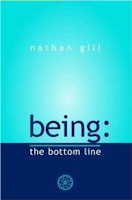ADHYĀROPĀPAVĀDA: REVISITING THE INTERPRETATIONS OF SVĀMI SACCIDĀNANDENDRA SARASVATĪ AND THE POST-ŚAṄKARĀDVAITINS (continued)
by Manjushree Hegde
(Read Part 2)
VI. Adhyāropāpavāda According to the PSA
For the PSA, “Brahman can only be shown, not described” (Murthy 1959, p. 57), albeit in a circuitous, approximate manner (“adūraviprakarṣeṇa”).27 The crux of this position lies in the contention that although brahman eludes direct descriptive elucidation (abhidhā), it retains a semblance of apprehensibility through indirect means (lakṣaṇā). Vācaspati Miśra illustrates with an example: in order to explain gold, we point to gold ornaments—earrings, bracelets, etc—and explain it as the substance that assumes these various shapes; it is that which remains when the shapes no longer do. In a similar manner, the śruti “points to” the world-appearances to “show” brahman as that which assumes these various appearances; it is also what remains when the appearances no longer do (Bhāmati 1.1.4).
Accordingly, for the PSA, adhyāropāpavāda is one method to “show” brahman.28 Consider the stock example of Bhagavadgītā 13.14–15. In the verse 13.14, brahman is said to possess karmendriyas (hands, feet, etc.) and jñānendriyas (eyes, etc.). According to the PSA, this is an adhyāropa that is useful in drawing attention to the existence of brahman as that which permeates everything—including the human body and the sensory organs— and allows movement/perception to occur: ‘immanent’ brahman (Rambachan 2017, pp. 164–165). Ānandagiri writes, “The faculties of the body are a function of the consciousness that enlivens them; through them, the presence of brahman (as consciousness) can be recognized.”29 The śruti, thus, ‘points’ to brahman with the help of the attributes in accordance with the arundhati darśana nyāya. This is adhyāropa. In the verse immediately following this, brahman is said to be “without senses” and “devoid of qualities.” This is an apavāda that contradicts the preceding adhyāropa to point to brahman’s ‘transcendent’ nature (Rambachan 2017, pp. 164–165).30
Continue reading →


